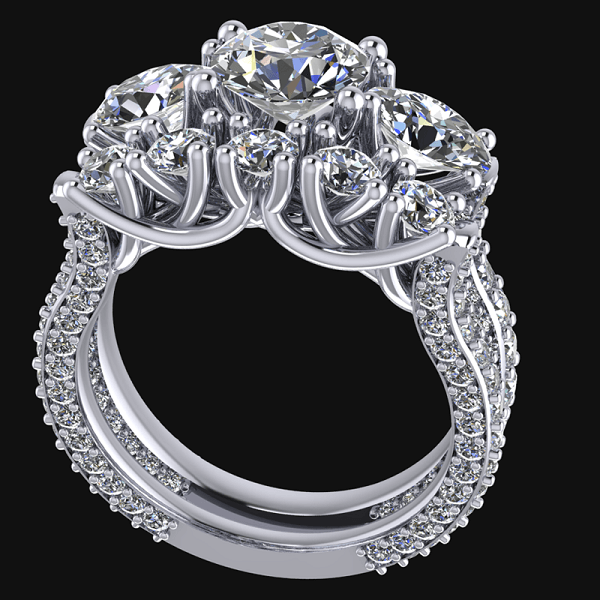Jewelry Terminology
The Essential Guide to Jewelry Terminology
Jewelry isn't just an accessory; it's an art form, a symbol of emotion, and a timeless expression of beauty. By understanding the terminology of jewelry, you can deepen your appreciation of each piece and feel empowered to make informed decisions. Whether you're exploring gemstones, metals, or design styles, this guide will take you through the essential language of jewelry.

Gemstones and Their Mystique
Carat Weight (ct)
Carat weight measures the mass of gemstones. One carat equals 200 milligrams. Notably, don’t confuse this with karat, which refers to gold purity. Furthermore, mastering gemstone terminology ensures you know what to look for when shopping for fine jewelry.
Cut
The cut of a gemstone influences its brilliance, fire, and overall appearance. For instance, a well-cut stone maximizes light reflection and enhances its visual appeal. In jewelry making terminology, cut refers to the craftsmanship that shapes the stone’s beauty. Moreover, cut impacts the way light interacts with the gem, creating sparkle and fire.
Clarity
Clarity evaluates the presence of inclusions (internal flaws) or blemishes (surface imperfections). Therefore, fewer imperfections mean higher clarity and value, an essential factor in both engagement ring terminology and wedding ring terminology. Additionally, clarity plays a critical role in determining a gemstone's rarity.
Color
Color grading is crucial for gemstone value. The hue, tone, and saturation contribute to the stone’s appeal. Furthermore, some colors are rarer and more sought after. Many jewelry stores feature detailed guides or even jewelry terminology with pictures to help customers understand color variations. As a result, buyers can feel more confident when choosing the perfect gemstone.
We have addiotnal information here teaching everyone about Diamonds, Lab Diamonds and Natural Diamonds.
The Allure of Metals with Jewelry Terminology
Karat (K)
Karat measures gold purity, with 24K being pure gold. Common alloys include:
- 18K: 75% gold
- 14K: 58.3% gold
- 10K: 41.7% gold
Sterling Silver
Sterling silver consists of 92.5% silver and 7.5% other metals, usually copper, for enhanced durability. As a result, jewelry making terminology often emphasizes the balance of silver’s beauty with its practicality. Furthermore, sterling silver remains an affordable yet luxurious option for many.
Platinum
A strong, tarnish-resistant metal, platinum is prized for its purity and weight, making it ideal for luxury jewelry. Moreover, it’s a popular choice in both engagement ring terminology and wedding ring terminology due to its durability. Consequently, platinum is considered a premium choice for wedding bands.
Rhodium Plating
Rhodium, a rare metal, is used to plate white gold or silver jewelry, offering a reflective white finish and extra durability. Many jewelry stores recommend rhodium plating to maintain a polished look. Additionally, this process helps prevent tarnish, keeping jewelry looking like new.
Jewelry Styles and Designs, jewelry terminology
Solitaire
A classic setting showcasing a single gemstone, often chosen for engagement rings to highlight the stone’s natural beauty.
Halo
A sparkling circle of smaller stones around a center gem enhances brilliance and creates the illusion of a larger stone. In addition, many jewelry terminology with pictures guides highlight halo settings for their visual appeal.
Pavé
Tiny gemstones are set close together in this style, creating a dazzling, encrusted surface of sparkle. Consequently, pavé settings are a popular choice for adding texture to modern designs.
Filigree
Intricate, lace-like metalwork, often seen in vintage and antique jewelry, adds timeless elegance to any piece. Thus, it’s a hallmark of jewelry terminology, emphasizing delicate craftsmanship. Furthermore, filigree designs can add a touch of romance to modern jewelry.
Understanding Jewelry Settings
Prong Setting
Metal prongs or claws grip the gemstone, allowing maximum light exposure for enhanced sparkle and brilliance. Additionally, this setting creates an airy, elegant look that highlights the stone.
Bezel Setting
A protective metal rim encircles the gemstone, providing a sleek, modern look and secure setting. Therefore, it’s an excellent choice for those seeking durability without sacrificing style.
Channel Setting
Gemstones are nestled in a metal channel, creating a smooth surface often used in wedding bands and eternity rings. Consequently, this setting is ideal for a sleek, polished finish. Moreover, it’s a versatile choice for many designs.
Engagement Ring Terminology Tip: Settings like prong and bezel are essential to understand when choosing the perfect ring style. Furthermore, knowing these terms can simplify the selection process.
Why Knowing Jewelry Terminology Matters
Learning the language of jewelry helps you appreciate the craftsmanship and artistry behind each piece. Additionally, it’s not just about buying jewelry—it’s about connecting with the story, skill, and meaning behind it. Moreover, for visual learners, jewelry terminology with pictures can offer a deeper understanding of designs and details.
You can discover more at GIA and Jewelry terminology to understand and learn about Diamond terminology.
Ready to Begin Your Jewelry Journey?
Explore our exquisite collection at BVW Jewelers, where every piece is crafted with precision and passion. Let us help you find or create a design that tells your unique story.




